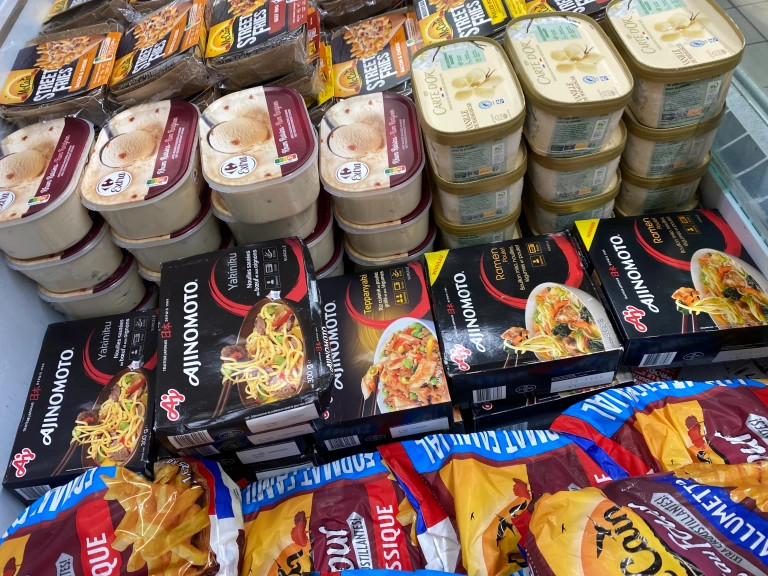
Expectations were not met–in many ways.
Ajinomoto is a top brand of frozen food in Japan, and it’s also sold in various countries across Europe. Our Japanese-language reporter and world traveler Ikuna Kamezawa has frequently seen their gyoza while traveling, but she’s also found a selection of Ajinomoto foods that came in stylish black boxes, including “Yakiniku” and “Teppanyaki.” Ikuna says these weren’t very hard to find; if you check in a large supermarket or an Asian market, you’d probably be able to find them throughout Europe. She found hers in France.
But there was something funny about these frozen meals. Though they had Japanese names of real Japanese foods, the pictures didn’t match the names at all. The “Yakiniku” box–which should have shown slices of flame-grilled meat, with maybe some rice on the side–clearly had a picture of yakisoba, or stir-fried noodles, and the “Teppanyaki” box–which should have looked like flat-grilled meat and vegetables, looked like fried rice.
What was that about? Ikuna couldn’t help but wonder, so she bought a box each of three different varieties to see what they actually looked like and tasted like on the inside.
She started with “Yakiniku”, which cost 4.25 euros (613 yen/US$4.47). Inside was a billowing plastic bag filled with what looked like noodles and vegetables.
Ikuna poured the contents into a bowl…
Then put it in the microwave for five minutes.
The finished product looked nothing like yakiniku, despite the slices of beef it contained. Any way you looked at it, it was a noodle dish, and perhaps not even a Japanese-style noodle dish, based on the ingredients.
Maybe they chose to call it yakiniku because of the beef slices? The beef wasn’t as tender or delicious as yakiniku and felt more like cheap cuts grilled over low heat for far too long (they were dry as bone). Besides that, the dish included slices of three kinds of bell peppers and onions.
If it had been labeled something less specific like “Chinese-style saucy noodles”, Ikuna probably wouldn’t have minded it so much. But since it was calling itself “Yakiniku”, Ikuna couldn’t help but feel it was just all wrong. Why did Ajinomoto decide to give it that name? Instead of answering her questions, this frozen meal only deepened the mystery.
The “Teppanyaki” dish was the same price of 4.35 euros, and like the “Yakiniku”, the picture on the package did not match the name. It was clearly fried rice.
The dish contained plenty of ingredients, including chicken, two kinds of bell peppers, edamame, green peas, carrots, onions, and corn. The rice looked like the kind of rice popular in Southeast Asian countries like Thailand: long and thin, as opposed to the short-grain rice common in Japan.
While it looked pretty good, the flavor was so weak, almost as if they had entirely forgotten to salt it. The chunky chicken was tasty, but Ikuna couldn’t help but think that basing the name of “teppanyaki” on this chicken alone was a bit of a stretch.
On the other hand, it is possible to cook fried rice on a teppan, or a Japanese griddle, and perhaps this is a common image of Japanese cooking based on the types of Japanese restaurants that are popular overseas. However, to Japan-native Ikuna, the foods that most come to mind with the word “teppanyaki” are meat and fish. She couldn’t help but feel sad that this is what Europeans might believe is Japanese teppanyaki.
The last one that Ikuna tried was “Ramen Poulet” (chicken ramen), which was 3.5 euros (or 505 yen.) In this case, the packaging did actually look like ramen, which was a relief.
This one also had bell peppers in it. Ikuna had to wonder, do Europeans really like bell peppers that much? Japanese cuisine, for reference, rarely uses bell peppers, though you might sometimes find them in western-style dishes served in Japan.
The broth was…unique. It tasted a bit like Japanese tonkotsu, or pork bone broth, but it also felt a bit like a thick and creamy soup, or a miso soup with potatoes. Ikuna is used to ramen tasting differently in other countries, but in most cases, the ramen she tried tasted good, just in an unexpected way. The flavor of this soup, sadly, was too weak for her; if she hadn’t been really hungry, she probably would never want to eat this.
This further served to perplex Ikuna, who had to assume that Ajinomoto, originally a Japanese company, should have the know-how to make a really good frozen ramen, and instead they produced this.
Ikuna could only assume that these dishes were made more to suit European tastes, which was perfectly fine, as she was in Europe. Despite the mysterious nature of the packaging not matching the name of the product, and the flavors not quite meeting her expectations, Ikuna had to say she had an interesting time taste-testing them. She’ll always continue to try Japanese food overseas because it’s fun, and sometimes even educational.
Images © SoraNews24
● Want to hear about SoraNews24’s latest articles as soon as they’re published? Follow us on Facebook and Twitter!

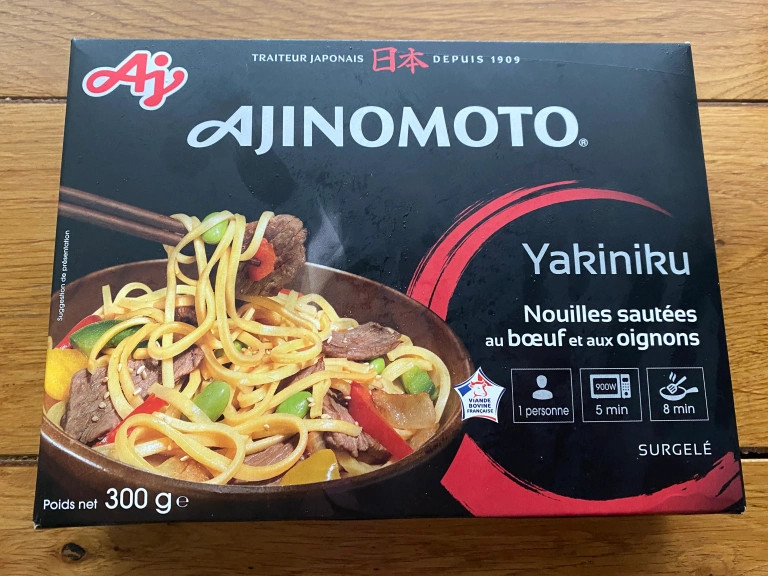
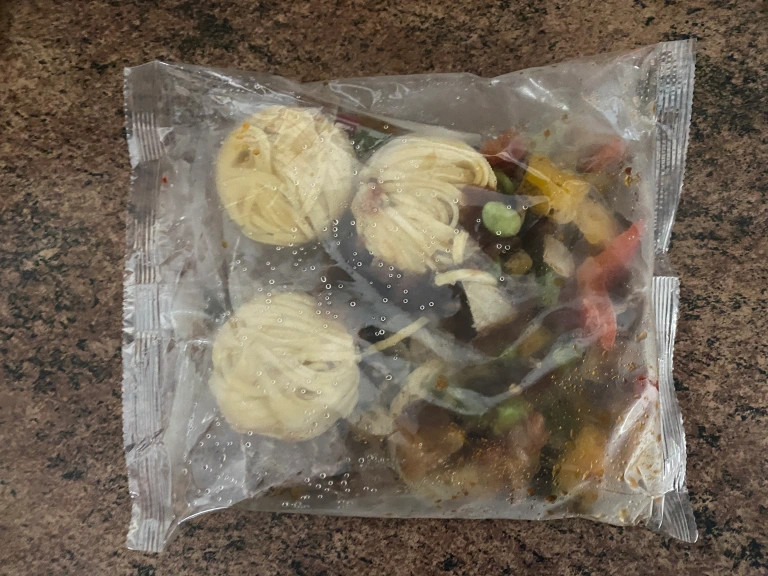
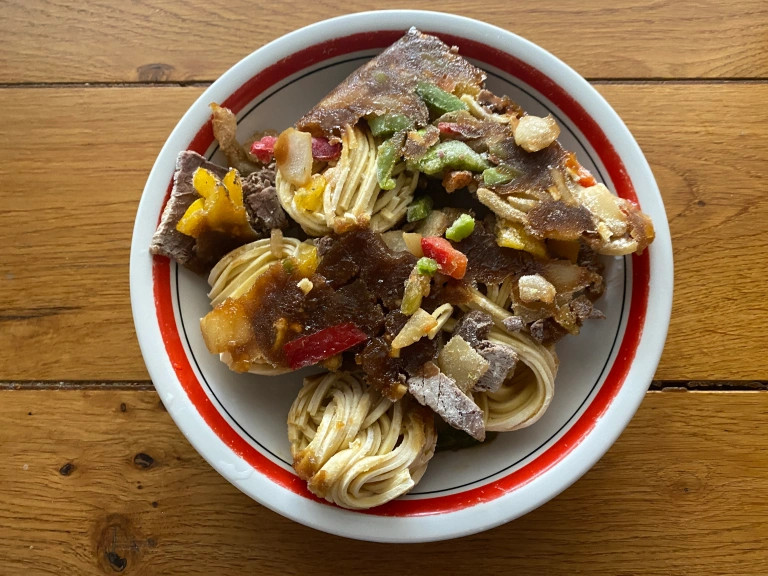
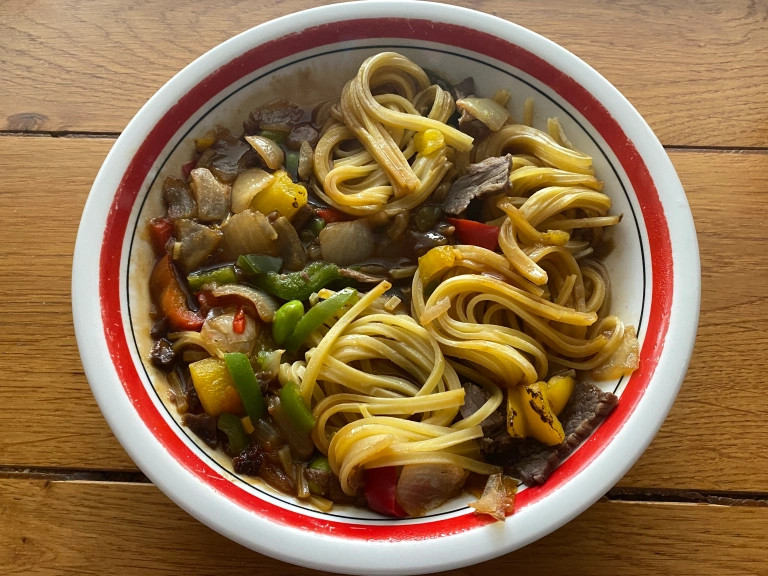
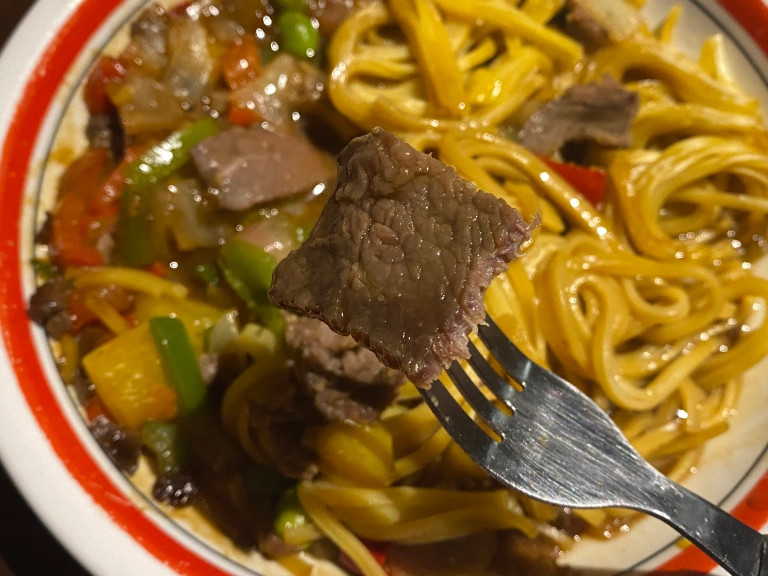
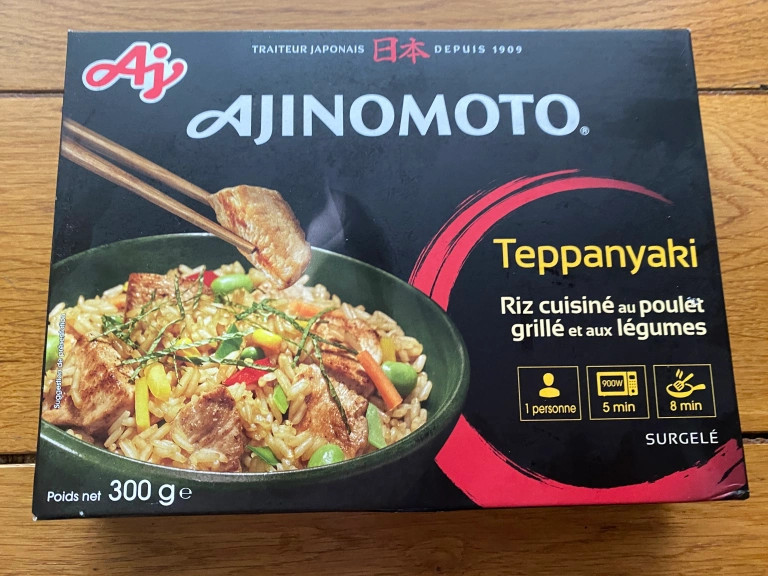

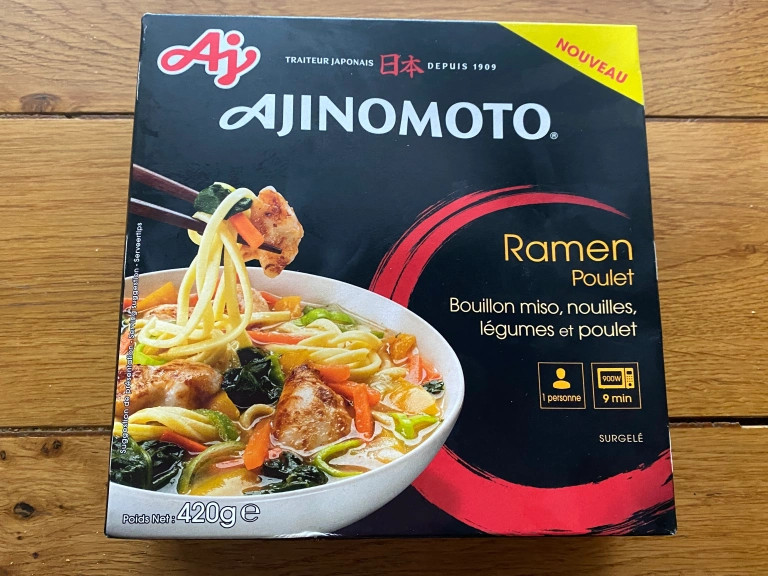

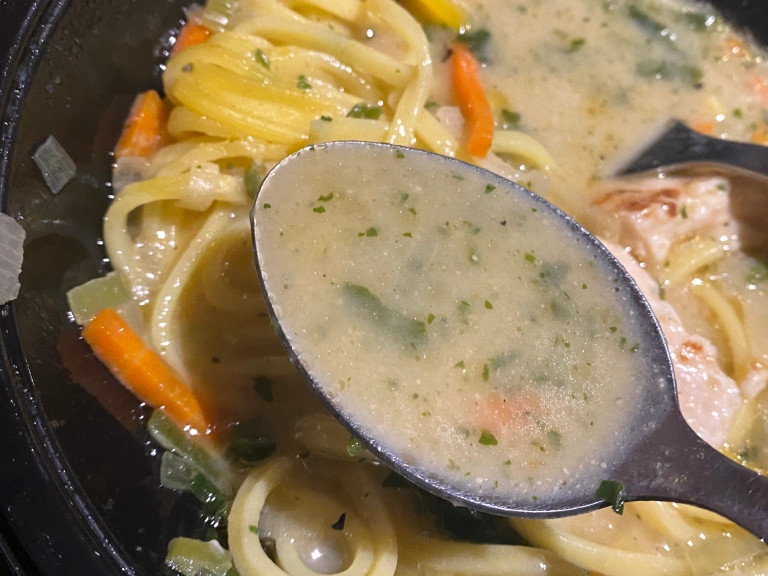
 We try European Cup Noodle Soba flavors to see which ones come out on top 【Taste test】
We try European Cup Noodle Soba flavors to see which ones come out on top 【Taste test】 We visit a restaurant called ‘Otaku’ in France, eat some otaku sushi
We visit a restaurant called ‘Otaku’ in France, eat some otaku sushi We visit a ramen bar in Croatia, meet a whole new version of ramen we can’t wait to make at home
We visit a ramen bar in Croatia, meet a whole new version of ramen we can’t wait to make at home Have you tried Tokushima ramen? No? You should (says our obsessed Japanese-language reporter)
Have you tried Tokushima ramen? No? You should (says our obsessed Japanese-language reporter) One minute is all you need to make this popular instant noodle meal from Okayama【SoraKitchen】
One minute is all you need to make this popular instant noodle meal from Okayama【SoraKitchen】 Foreigner’s request for help in Tokyo makes us sad for the state of society
Foreigner’s request for help in Tokyo makes us sad for the state of society Japanese city loses residents’ personal data, which was on paper being transported on a windy day
Japanese city loses residents’ personal data, which was on paper being transported on a windy day Ghibli Park now selling “Grilled Frogs” from food cart in Valley of Witches
Ghibli Park now selling “Grilled Frogs” from food cart in Valley of Witches Akihabara pop-up shop sells goods made by Japanese prison inmates
Akihabara pop-up shop sells goods made by Japanese prison inmates Here’s what Japanese netizens think of the U.S.’s top 20 most-picked karaoke songs
Here’s what Japanese netizens think of the U.S.’s top 20 most-picked karaoke songs Resol Poshtel: Cheap capsule hotel in Tokyo is a hit with overseas visitors, and we find out why
Resol Poshtel: Cheap capsule hotel in Tokyo is a hit with overseas visitors, and we find out why Red light district sushi restaurant in Tokyo shows us just how wrong we were about it
Red light district sushi restaurant in Tokyo shows us just how wrong we were about it Sandwiches fit for a sumo served up in Osaka【Taste Test】
Sandwiches fit for a sumo served up in Osaka【Taste Test】 McDonald’s new Happy Meals offer up cute and practical Sanrio lifestyle goods
McDonald’s new Happy Meals offer up cute and practical Sanrio lifestyle goods Historical figures get manga makeovers from artists of Spy x Family, My Hero Academia and more
Historical figures get manga makeovers from artists of Spy x Family, My Hero Academia and more Japanese ramen restaurants under pressure from new yen banknotes
Japanese ramen restaurants under pressure from new yen banknotes French Fries Bread in Tokyo’s Shibuya becomes a hit on social media
French Fries Bread in Tokyo’s Shibuya becomes a hit on social media Studio Ghibli releases new action figures featuring Nausicaä of the Valley of the Wind characters
Studio Ghibli releases new action figures featuring Nausicaä of the Valley of the Wind characters New private rooms on Tokaido Shinkansen change the way we travel from Tokyo to Kyoto
New private rooms on Tokaido Shinkansen change the way we travel from Tokyo to Kyoto Tokyo Tsukiji fish market site to be redeveloped with 50,000-seat stadium, hotel, shopping center
Tokyo Tsukiji fish market site to be redeveloped with 50,000-seat stadium, hotel, shopping center All-you-can-drink Starbucks and amazing views part of Tokyo’s new 170 meter-high sky lounge
All-you-can-drink Starbucks and amazing views part of Tokyo’s new 170 meter-high sky lounge Beautiful Ghibli sealing wax kits let you create accessories and elegant letter decorations【Pics】
Beautiful Ghibli sealing wax kits let you create accessories and elegant letter decorations【Pics】 Studio Ghibli releases Kiki’s Delivery Service chocolate cake pouches in Japan
Studio Ghibli releases Kiki’s Delivery Service chocolate cake pouches in Japan New definition of “Japanese whiskey” goes into effect to prevent fakes from fooling overseas buyers
New definition of “Japanese whiskey” goes into effect to prevent fakes from fooling overseas buyers Our Japanese reporter visits Costco in the U.S., finds super American and very Japanese things
Our Japanese reporter visits Costco in the U.S., finds super American and very Japanese things Studio Ghibli unveils Mother’s Day gift set that captures the love in My Neighbour Totoro
Studio Ghibli unveils Mother’s Day gift set that captures the love in My Neighbour Totoro More foreign tourists than ever before in history visited Japan last month
More foreign tourists than ever before in history visited Japan last month New Pokémon cakes let you eat your way through Pikachu and all the Eevee evolutions
New Pokémon cakes let you eat your way through Pikachu and all the Eevee evolutions Sales of Japan’s most convenient train ticket/shopping payment cards suspended indefinitely
Sales of Japan’s most convenient train ticket/shopping payment cards suspended indefinitely Sold-out Studio Ghibli desktop humidifiers are back so Totoro can help you through the dry season
Sold-out Studio Ghibli desktop humidifiers are back so Totoro can help you through the dry season Japanese government to make first change to romanization spelling rules since the 1950s
Japanese government to make first change to romanization spelling rules since the 1950s Ghibli founders Toshio Suzuki and Hayao Miyazaki contribute to Japanese whisky Totoro label design
Ghibli founders Toshio Suzuki and Hayao Miyazaki contribute to Japanese whisky Totoro label design Doraemon found buried at sea as scene from 1993 anime becomes real life【Photos】
Doraemon found buried at sea as scene from 1993 anime becomes real life【Photos】 Tokyo’s most famous Starbucks is closed
Tokyo’s most famous Starbucks is closed One Piece characters’ nationalities revealed, but fans have mixed opinions
One Piece characters’ nationalities revealed, but fans have mixed opinions We asked a Uniqlo employee what four things we should buy and their suggestions didn’t disappoint
We asked a Uniqlo employee what four things we should buy and their suggestions didn’t disappoint Princesses, fruits, and blacksmiths: Study reveals the 30 most unusual family names in Japan
Princesses, fruits, and blacksmiths: Study reveals the 30 most unusual family names in Japan Our reporter orders food from Uber Eats, falls in love, learns that fate works in mysterious ways
Our reporter orders food from Uber Eats, falls in love, learns that fate works in mysterious ways Do people in Osaka really eat crunchy fried noodles with curry? We ask a local, then try it out
Do people in Osaka really eat crunchy fried noodles with curry? We ask a local, then try it out Our reporters try a yakiniku sauce called “Even Women Garlic” to figure out what that means
Our reporters try a yakiniku sauce called “Even Women Garlic” to figure out what that means Our Japanese language reporter gets lucky with Vietnam McDonald’s Prosperity Beef Burger
Our Japanese language reporter gets lucky with Vietnam McDonald’s Prosperity Beef Burger We try a rotating sushi restaurant in New Delhi, are surprised to find no rotating sushi
We try a rotating sushi restaurant in New Delhi, are surprised to find no rotating sushi McDonald’s breakfast menu in Hong Kong is like nothing we’ve ever seen in Japan
McDonald’s breakfast menu in Hong Kong is like nothing we’ve ever seen in Japan Hey, Croatian taxi driver! Take us to the restaurant with the best štrukli in Zagreb
Hey, Croatian taxi driver! Take us to the restaurant with the best štrukli in Zagreb We try Ajinomoto’s European Chicken Katsu Curry Style frozen gyoza that has no katsu in it
We try Ajinomoto’s European Chicken Katsu Curry Style frozen gyoza that has no katsu in it Japanese confectionery store Toraya serves up a surprising meal in Paris
Japanese confectionery store Toraya serves up a surprising meal in Paris Ramen and girls bar: Where you can talk to women who aren’t dressed like hosts or maids
Ramen and girls bar: Where you can talk to women who aren’t dressed like hosts or maids Taste-testing Japan’s beef tongue/gacha beef vending machine in Sendai【Taste test】
Taste-testing Japan’s beef tongue/gacha beef vending machine in Sendai【Taste test】 Can we really become YouTubers with the Thanko YouTuber Debut fukubukuro lucky bag?
Can we really become YouTubers with the Thanko YouTuber Debut fukubukuro lucky bag? We stumbled upon “Pudding Street” in Hanoi, so of course we had to investigate
We stumbled upon “Pudding Street” in Hanoi, so of course we had to investigate We get our hands on a coveted Yodobashi lucky bag, this time the beauty and health gadget box
We get our hands on a coveted Yodobashi lucky bag, this time the beauty and health gadget box New Year lucky bag from makeup giant Shu Uemura may disappoint makeup buffs but thrill otaku
New Year lucky bag from makeup giant Shu Uemura may disappoint makeup buffs but thrill otaku Japan’s big eats just got even bigger at this little-known cafe
Japan’s big eats just got even bigger at this little-known cafe
Leave a Reply